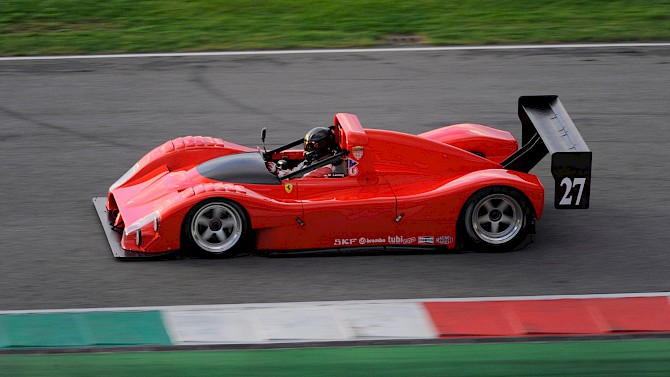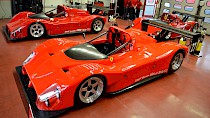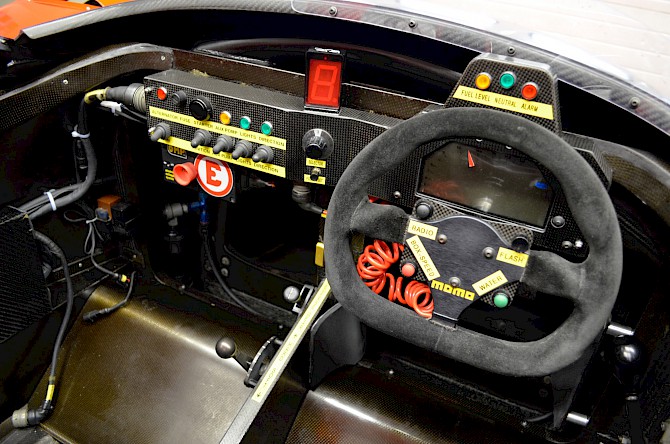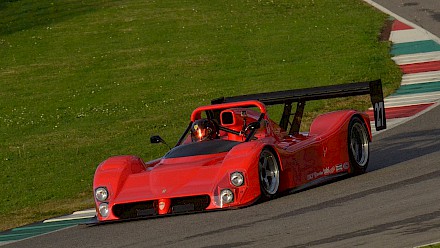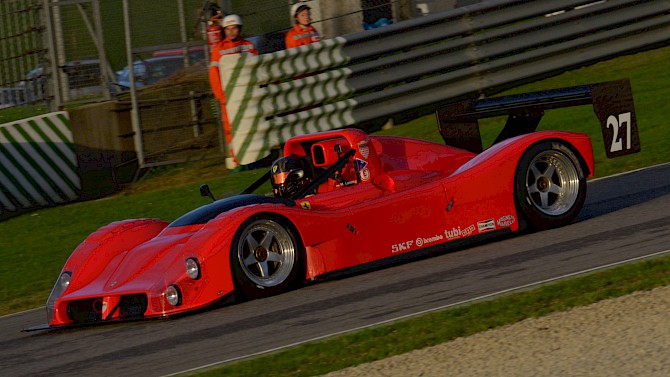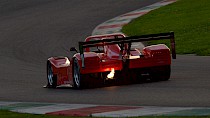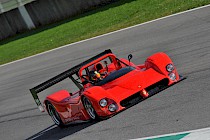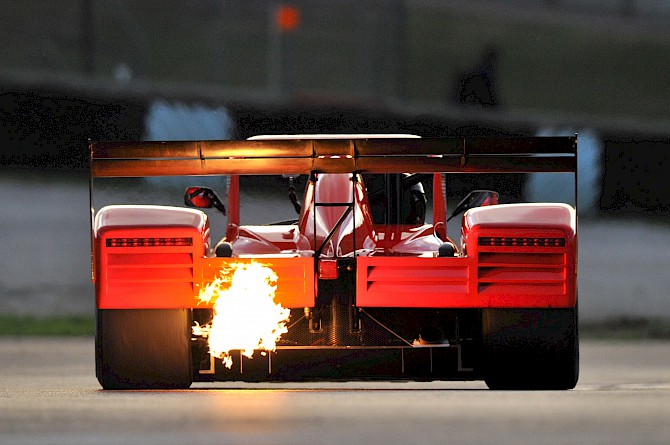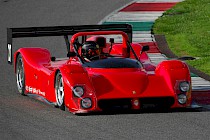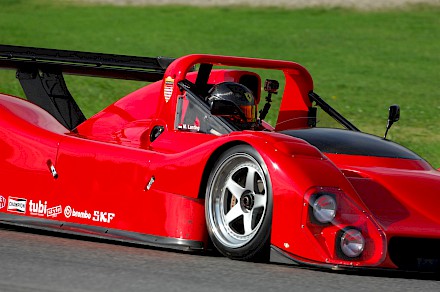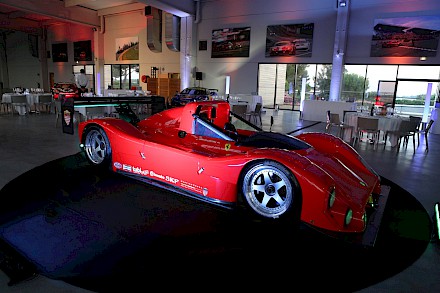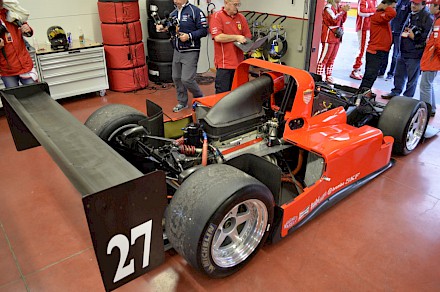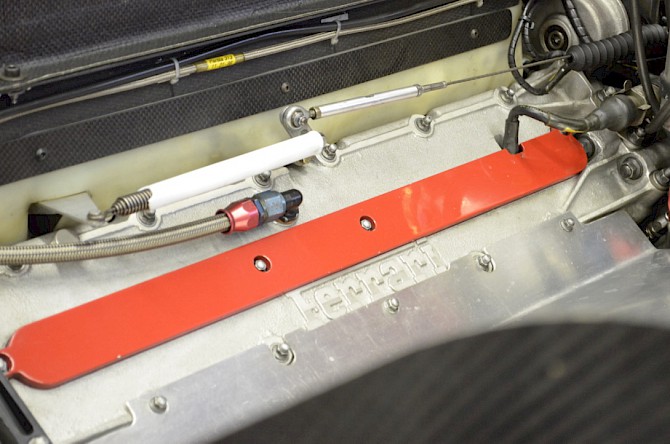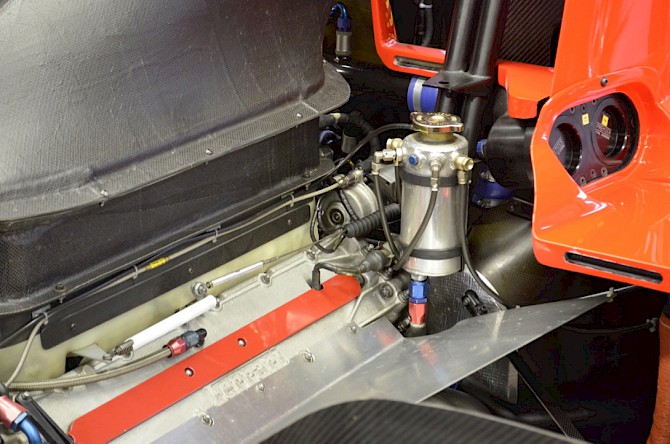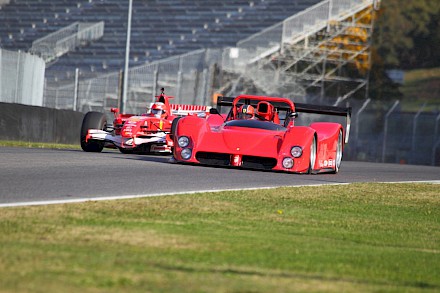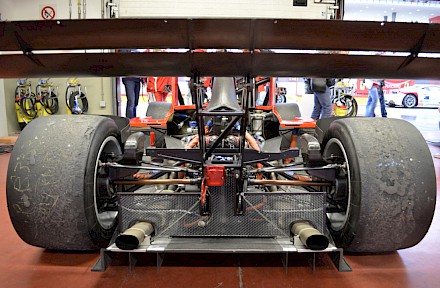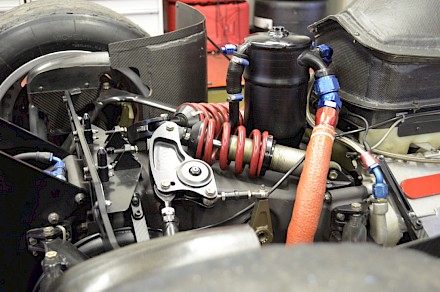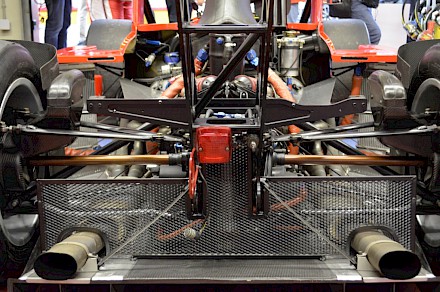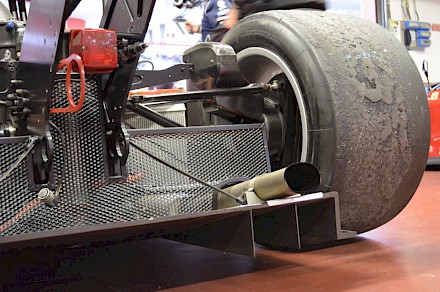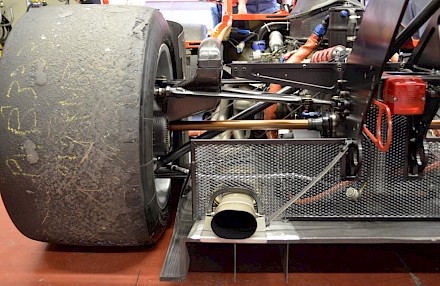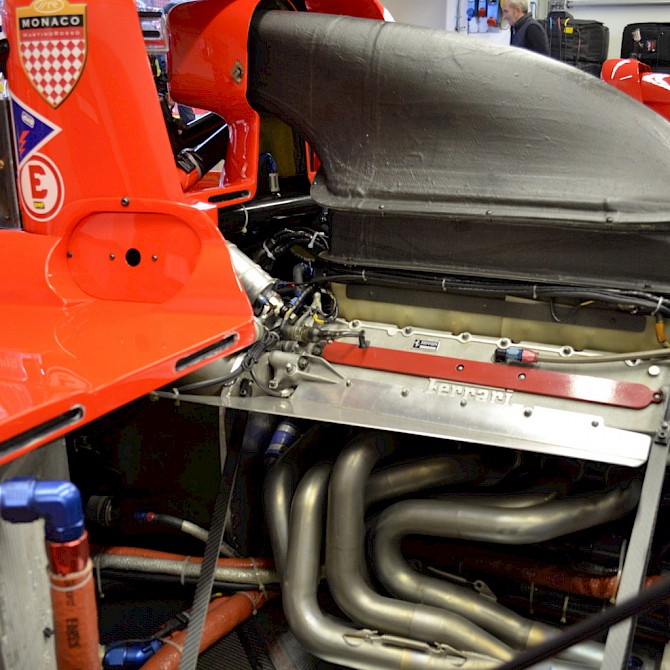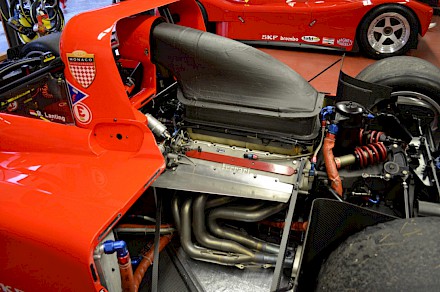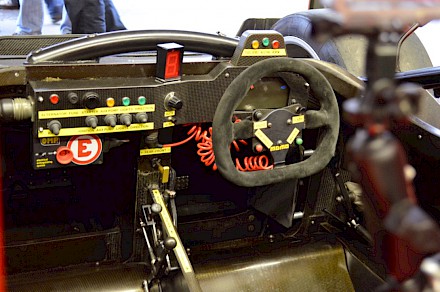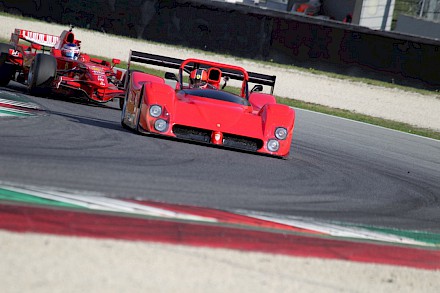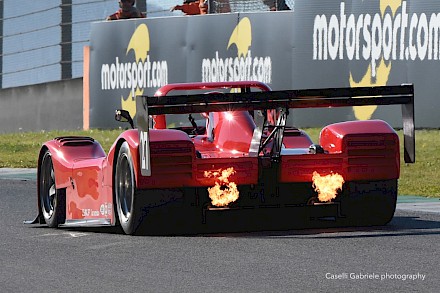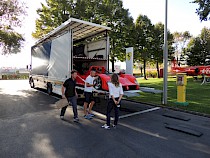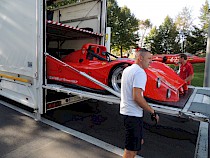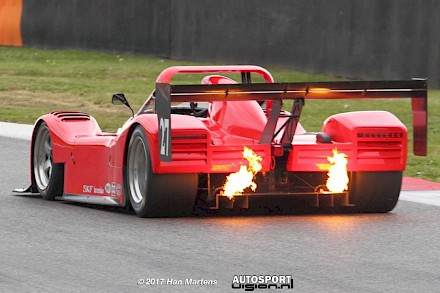Details & description
The Ferrari 333 SP is without any doubt a very remarkable racecar. It heralded the famed automaker’s return to professional sports car competition after an absence of more than twenty years. Introduced on the American racing circuit in 1994, it found instant success and continued to be a major player in numerous races in the USA and Europe. Of the 126 races the 333 SP entered, it emerged victorious in nearly fifty, making it one of the most successful sport prototype cars in Ferrari’s history. Micholotto S.a.s. in Padova Italy produced all cars with chassis numbers from 16 to 41. The Ferrari 333 SP was incredibly succesfull, with the car securing a string of victories, especially in 1998. The list is truly impressive : the 24H of Daytona, the 12H of Sebring, the 6H of Watkins Glen with the Moretti team as well as its class at the 24H of Le Mans and the Petit Le Mans with the RISI team.
Today Michelotto is continuing the maintenance and race support of these icons, as well as providing detailed and correct restoration services on any of the 26 cars ever build.
Engine:
- Configuration: F130E 65º V12
- Location: Mid, longitudinally mounted
- Construction: light alloy block and head
- Displacement: 3.997 liter / 243.9 cu in Bore / Stroke: 85.0 mm (3.3 in) / 58.7 mm (2.3 in)
- Compression: 13.0:1
- Valvetrain: 5 valves / cylinder, DOHC
- Fuel feed: Weber-Marelli SPI Fuel
- Injection Lubrication: Dry sump
- Aspiration:
- Naturally Aspirated Power: 641 bhp / 478 KW @ 11000 rpm
- Torque: 441 Nm / 325 ft lbs @ 9000 rpm BHP/Liter: 160 bhp / liter
Drivetrain :
- Body: carbon composite panels
- Chassis: carbon-fibre and aluminium honeycomb monocoque
The Ferrari 333SP:
The Ferrari 333 SP was Ferrari's first pure sports-racing car in decades. The aerodynamic styling of the Ferrari 333 SP made it a winner. 39 Ferrari 333 SP cars were built. Numbers 001 to 017 by Dallara and Number 18 to 40 by Michelotto. Number 13 was not used. The Ferrari 333 SP was born from a vision shared by two stalwart figures in Ferrari history -- Piero Ferrari and racing driver Giampiero Moretti, who had founded the MOMO accessory company.
Derek Bell, who has driven Ferrari's sports prototypes from both eras says the F333 “drives like a wide bodied F1 car and is totally complete, flawless and homogeneous.”
The F333 was constructed using techniques from Ferrari's own F92 Formula 1 car, but was designed and manufactured partially at the facilities of Dallara in Parma and later with Michelotto Automobili in Padova. Chief Designer Mauro Rioli and aerodynamicists Dialma Zinelli and Giorgio Camaschella designed the car as a widened F1 with a fully-enclosed, two-seat body.
Chassis construction of the F333 is made from carbon-fiber composite and aluminum honeycomb covered by a carbon-fiber/nomex body. The panels are all quickly removable to reveal the fully-stressed V12 engine and sequential-manual gearbox which are an integral part of the chassis. The driver is quite well protected by a substantial roll hoop and additional bracing. Inside, the cockpit purposely sparse except for a few essentials such as toggles, fuses and the digital dashboard.
Racing
Since this was the first prototype from Ferrari since the 312 P of 1971, it won many prestigious events outright that hadn't had a Ferrari victory in over 20 years.
The first F333 appeared at to prospective owners before the 1994 season by MOMO owner and sometimes driver Giampiero Moretti. During that season four cars were sent to America to compete in the IMSA GT Championship and they debuted mid-season in the Atlanta Sprint at Road Atlanta to win a resounding victory first time out. They won four races that year, but lost the overall Championship to the Oldsmobile Cutlass Supremes by four points.
In 1995, the design was updated to a new longer nose and each car had different aerodynamic details depending on the downforce required. Scandia Motorsports put their car to good use and won the 1995 12 Hours of Sebring outright. Another car would repeat this feat in 1997 and 1998, but the overall victory at Le Mans eluded the Ferrari. Another historic victory came at the 1998 24 Hours of Daytona when the F333 SP's 1-2-3 victory was reminiscent of Ferrari's own 1-2-3 in 1967.
Michelotto's Series II
Driver Didier Theys said the F333's “potential, if it were a Factory entry, would be far greater since none of the teams had the means to truly develop it extensively.”He talked about the development: “For 1996 at Momo we developed closed flanks bodywork. This and other versions were studied by Michelotto before they produced their 1998 body. For Le Mans and the European ISRS series the rules have allowed a six speed gearbox as well as one inch bigger wheels.”4
Kevin Doran, who managed the Momo team with Didier said “There has been very little development to the car in all these years because it has been very good from the beginning. The new nose developed for 1995 was, I think, primarily for aesthetics!”He also says the only major revision to the car was the 1998 engine which was much more durable thanks to its smaller valves and modified air filter.4
From car number 017 forward, the 1998 cars received the small-valve engine, a strengthened chassis and four-pages of numerous detail changes engineered by Ferrari themselves. These won Sebring and Daytona outright with a class victory at Le Mans.
FERRARI 333 SP #027 – 1999:
Presented here is chassis 027, a late production Michelotto example built in 1999. As such, it has been fitted with all the important development updates while retaining its original engine. Sold new in Austria, where it has remained until this day, it has no race history but has been enthusiastically enjoyed at club events.
Although only sparingly used, this sophisticated and powerful sports racing machine has been carefully maintained and is offered here in excellent condition in all respects, ready for competition on the race track or the show field.
The car is in ‘concours elegance’ condition, ready to drive and eligible in the Ferrari F1 Clienti program.
